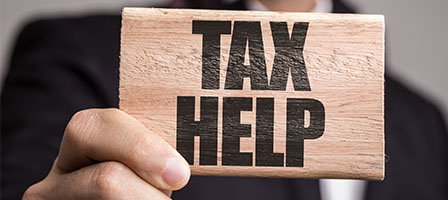Tax Pro Plus
2999 Overland Ave.
Suite 204
Los Angeles, CA 90064
Map It!
Ph: (310) 827-4829
Fax: (310) 842-7160
info@taxproplus-la.com
Businesses Score Big Tax Benefits with the CARES Act
 Article Highlights:
Article Highlights: - Retroactive Net Operating Loss Carrybacks
- Retroactive 100% Bonus Deprecation for Leasehold, Restaurant and Retail Improvements
- Limitation on Losses Relaxed
- Limitation on Deductible Business Interest Relaxed
- Net Operating Loss (NOL) - An NOL occurs when a business or individual with a business activity has more allowable tax deductions than it has taxable income, resulting in negative income or a net operating loss.
Prior to the tax reform that mostly became effective with 2018 returns (the Tax Cuts and Jobs Act – TCJA), NOLs generally could be carried back to the second prior year; that year’s income was reduced to zero, and as a result, the income tax for that year was also reduced to zero, which allowed the taxpayer to claim a refund of the tax originally paid. If all the loss was not used, the remainder of the loss was carried to the next succeeding year and forward until used up, but for only 20 years after the year of the original loss. The TCJA revised the law to eliminate the carryback of NOLs arising after 2017 and said that generally, NOLs were to be carried forward only, and removed the 20-year carryforward limitation but allowed an NOL to offset no more than 80% of the carryforward year’s taxable income.
Now, the recently enacted Coronavirus Aid, Relief, and Economic Security Act, shortened to the CARES Act, has restored NOL carrybacks for losses incurred in years 2018, 2019 and 2020 and extended the carryback period. For these years, NOLs can be carried back five years, and the loss is not subject to the 80% limitation.
Since the carryback provisions are retroactive to 2018, a taxpayer who incurred an NOL in 2018 should carry the loss back to 2013 by amending the 2013 return to recover tax paid in that year, then carry any excess loss forward to 2014. If there’s still loss remaining after amending the 2014 return, carry the remaining loss forward to 2015 and amend the 2015 return, and so on. If a loss was incurred in 2019, then the 2019 NOL gets carried back to 2014. If a 2018 loss was already carried forward to the 2019 return and the 2019 return has already been filed, it would need to be amended to carry the loss back to and amend the 2013 return. When the loss year is 2019, the carryback and amending process starts with the 2014 return. This whole process can become a bit complicated depending on the prior years’ situations but needs to be done in preparation for any losses incurred in 2020 as a result of business restrictions or shutdown as a result of the crisis.
Qualified Improvement Property – The term “qualified improvement property” refers to leasehold, restaurant and retail improvements. An unintended provision of the 2018 tax reform established the recovery (depreciation) period for qualified improvement property to be 39 years, which made it ineligible for the 100% bonus depreciation deduction that only applies to business property with a recovery period of 20 years or less.
The CARES Act makes a technical correction to the original 2018 tax reform legislation by designating qualified improvement property as 15-year recovery property, thus qualifying for 100% bonus depreciation or, if preferred, a 15-year depreciable life. This can be a big benefit for businesses that have been adversely impacted by the crisis, especially restaurants and retail stores that have lost so much business due to the epidemic’s economic fallout and are struggling to survive. A taxpayer who made improvements to their eligible business property in 2018 can take advantage of this change by amending their 2018 return. This correction applies to all future years, so if the business made eligible improvements in 2019 and the 2019 return has already been filed, it can also be amended.
- Limitation on Losses – The 2018 tax reform imposed business loss limitations on taxpayers except corporations. The CARES Act has made the loss limitation inoperable for businesses (including farming) through December 2020. Thus, this change is retroactive to 2018 and allows taxpayers who were affected by the limitation to amend their 2018 returns. This also applies to 2019 and 2020, so if the 2019 return has already been filed, it can also be amended.
- Limitation on Deductible Business Interest – Also as part of the 2018 tax reform, large businesses with incomes of $25 million ($26 million in 2019) or more were only allowed a business interest deduction of up to 30% of their adjusted taxable income. That limit has been changed to 50% for 2019 and 2020. Because income is expected to be lower in 2020, a special provision allows the 2019 adjusted taxable income to be used in figuring the 2020 interest deduction limit.
|
|  |